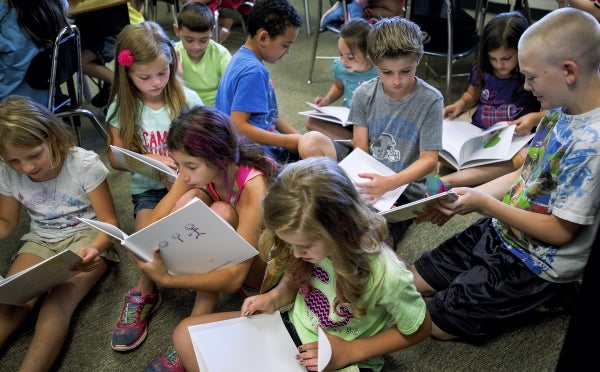Class-size debate, by the numbers
Published 3:20 pm Monday, February 12, 2018

- Students read books they created in 2016 in Mrs. Monday's second grade class at Bostian Elementary School. File photo
By Billy Ball
NC Policy Watch
When members of the North Carolina Senate passed a four-year plan for partially alleviating the state’s class size crisis Friday, some would say it was a long time coming.
Local school districts and public school advocates have long warned that a legislative order to chop K-3 class sizes would have deleterious effects on the state’s classrooms, demanding a massive investment in classroom space and possibly crowding out “enhancement” teachers — the arts, music and physical education instructors who would likely lose jobs as cash-starved districts scrambled to find budget space to meet the class size cap.
Lost in the debate is the fact that most, regardless of political affiliation, want a concrete approach to reducing class sizes in the vital early grades. But the details are of vital importance in this debate.
Here are some key numbers to remember, as the state House considers the class-size fix this week.
1.5 million: Number of public school students in North Carolina
115: Number of North Carolina school districts, all of which are impacted by the state’s class size crisis.
4,750: Number of estimated new classroom teachers required to meet the General Assembly’s pending class size cap.
$239 million: Amount needed to fully fund classroom and “enhancement” teachers under the General’s Assembly 2018-2019 class size cap, based on historic ratio of one enhancement teacher per six classroom teachers.
1: Number of years to retain the status quo, with phasing in of smaller class size caps in the ensuing three years.
$61 million: A recurring investment in “enhancement” teachers included in the General Assembly’s new GOP-authored class size bill, House Bill 90.
$8 billion: Estimated amount of infrastructure needs in the state’s public school systems, not including the cost of new classrooms needed to meet the legislature’s class size mandate.
$1.9 billion: Amount of proposed statewide school bond for school infrastructure. A bill to place a bond on the ballot has widespread support in the state House, but has failed to gain any traction in the Senate.
$0: Amount budgeted for public school infrastructure in the legislature’s class size bill.
Sources: House Bill 90, “The Unraveling: Poorly Crafted Education Policies are Failing North Carolina’s Children” and the N.C. Department of Public Instruction

